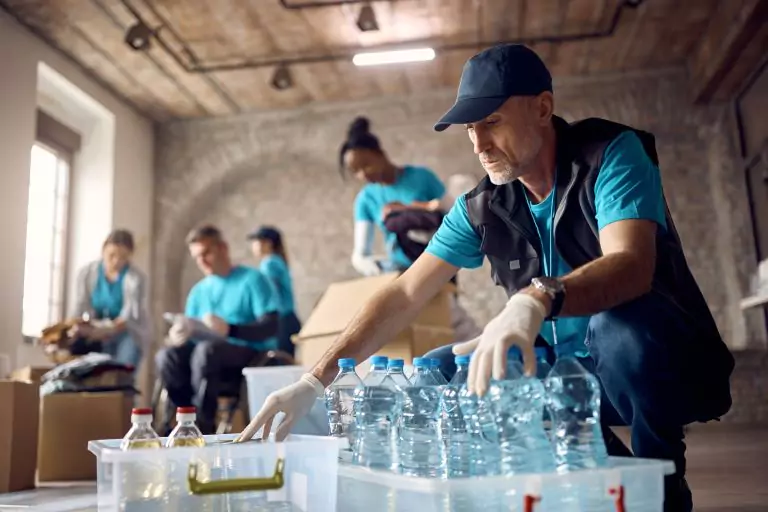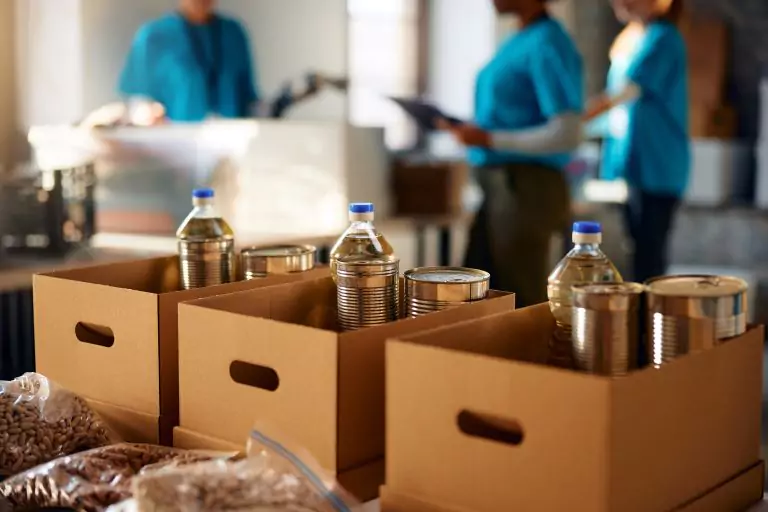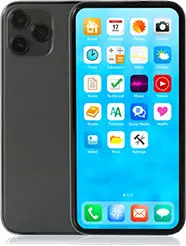If you’re experiencing food insecurity, you might be asking yourself, can anyone go to a food bank? The short answer is yes—food banks and food pantries are there to help anyone in need. Whether you’re facing a temporary setback or a long-term financial struggle, these programs are designed to provide support, nutritious food, and a sense of community.
In this blog, we’ll explain who can access a food bank, how these vital free food programs work, and what to expect when you visit.
What is a Food Bank?
A food bank is a nonprofit organization that collects, stores, and distributes large quantities of donated food. These organizations act as food distribution centers, supplying resources to local food pantries, soup kitchens, and community centers.
Food banks work behind the scenes to ensure food reaches the people who need it most. They receive emergency food only from:
Grocery stores donating surplus food.
Food manufacturers provide overstocked or mispackaged goods.
Farms donating fresh produce.
Community food drives collecting canned goods and other staples.
Thanks to their partnerships with local agencies and other programs, food banks act as lifelines for families experiencing food insecurity. They distribute food directly to their partners, who then get it into the hands of those who need it.
Who Can Go to a Food Bank?
The good news is that anyone experiencing food insecurity can go to a food bank. These programs are not limited to specific groups; they’re here for families, individuals, seniors, and even those who are employed but struggling to make ends meet.
What Do You Need to Access Food Assistance?
Eligibility requirements vary by location, and annual income, but most food banks and pantries only ask for:
Proof of residency, such as a utility bill or photo ID.
A self-declaration of income if required.
Basic information about your household size.
Food banks and pantries understand that everyone’s situation receives food assistance is different. They aim to provide assistance without judgment, ensuring you can get food when you need it most.
What to Expect When You Visit
If you’ve never been to a food bank or food pantry before, it’s natural to feel uncertain. Here’s what to expect during your first visit:
Before You Go
Call Ahead: Confirm the food bank’s operating hours and what documents you need to bring.
Arrive Early: Most food pantries operate on a first-come, first-served basis. Getting there early ensures you’ll have enough food for your family.
Bring Bags or Trunk Space: Be prepared to transport groceries home.
During Your Visit
You’ll typically be greeted by staff or volunteers who will guide you through the process. Many pantries operate like small grocery stores, allowing you to choose the food items your household needs. Others provide pre-packed boxes containing staples like canned goods, grains, and fresh produce.
How Food Banks Work Behind the Scenes
Food banks operate as well-oiled machines to tackle hunger. Here’s a look at how they get food from donors to your table:
Receiving Food Donations: Food banks collect donated food from grocery stores, manufacturers, and food drives. Surplus food and fresh produce are key contributions.
Storing and Sorting: Volunteers and staff sort food items, ensuring they meet safety standards before distributing them.
Distributing to Local Agencies: Partner organizations like food pantries and soup kitchens receive food from the bank and provide it directly to families.
Without these behind-the-scenes efforts, many communities wouldn’t have access to the nutritious food they need.
Can Anyone Go to a Food Pantry?
Food pantries work hand-in-hand with food banks to distribute food to local neighborhoods. These smaller, community-based sites make emergency food assistance accessible to anyone who needs it.
Where Can You Find a Food Pantry?
Food pantries are often located in:
Churches
Community centers
Schools
Mobile food pantry units serving rural areas
Because they’re so integrated into neighborhoods, food pantries are ideal for meeting the needs of local families.

Food Banks also Offer Additional Resources Beyond Food
Food banks and pantries often provide more than just groceries. Many locations offer programs to help families get back on their feet, such as:
SNAP (Supplemental Nutrition Assistance Program) enrollment assistance.
Nutrition and cooking classes to teach healthy, budget-friendly meal prep.
Job training and financial literacy workshops to improve long-term stability.
FAQs - Debunking Food Bank Myths
There are a lot of misconceptions about food banks and pantries. Let’s set the record straight:
Myth: Only the homeless can use food banks.
Reality: Anyone facing food insecurity is welcome, including families and seniors.
Myth: Food banks only provide canned goods.
Reality: Many locations offer fresh produce, dairy products, and proteins.
Myth: You can only visit once.
Reality: There’s no limit to how often you can seek help.
Online Help: EASY Wireless Oklahoma Assistance Resource Portal
In Oklahoma, the EASY Wireless search tool is a valuable resource for finding local food programs, housing help, and free cell phone services. This user-friendly database of online resources connects you to over 600 organizations offering critical support.
Visit the EASY Wireless Oklahoma Assistance Resources Page to explore assistance options tailored to your needs.
Food Banks are Here to Help
So, can anyone go to a local food bank? Yes! Food banks and pantries exist to ensure everyone has access to enough food, no matter their circumstances. If you or someone you know needs help, don’t hesitate to reach out to your nearest food bank or use online tools like the EASY Wireless Oklahoma Assistance Resource Portal to find support.
These programs are designed to lift families, reduce food waste, end hunger, and fight hunger in our communities. Remember, seeking help is a sign of strength, and food banks are here to help you through tough times.
Take the first step today—because everyone deserves access to nutritious food and the chance to thrive.
Eliminate Your Monthly Phone Bill and Find the Food Assistance You Need
Finally, consider enrolling in the EASY Wireless Lifeline program for FREE Talk, Text, and Data each month.
Having a free cell phone and data service can make all the difference for families when it comes to seeking assistance and support services.
Visit one of our 30+ Oklahoma EASY Wireless stores to sign up for FREE Cell Phone Service
or…
Expand Your Food Bank's Impact with EASY Wireless
Are you a food bank or pantry manager looking to bring even more resources to your community? Partner with EASY Wireless to provide Lifeline Program services—offering free smartphones, talk, text, and data to qualifying households.
By integrating this vital service into your emergency food assistance program and programs, you’ll empower families to:
Access Essential Resources: Connect with healthcare providers, job opportunities, and social services.
Stay Safe in Emergencies: Provide peace of mind with reliable communication for families and seniors.
Break Barriers: Enable children to access online school portals and help adults apply for jobs.
EASY Wireless makes it simple to get started, handling enrollment and ensuring a seamless setup tailored to your organization. Together, we can strengthen your community’s support network and help families thrive.
Contact EASY Wireless today to explore how we can work together to enhance your services and support those in need. Let’s partner for a brighter future!


